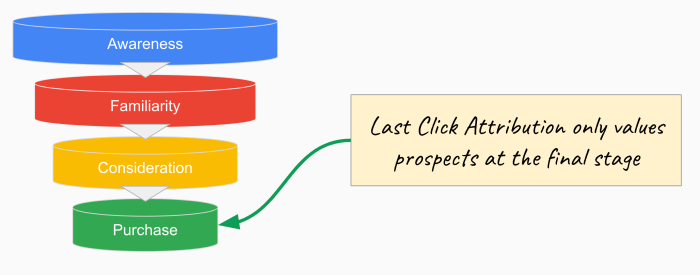Which attribution model distributes the credit for a conversion – Attribution models play a crucial role in marketing campaigns, as they determine how credit for conversions is allocated across different touchpoints in the customer journey. Understanding which attribution model to use is essential for accurate campaign measurement and optimization.
This article delves into the various attribution models available, explaining their mechanisms, advantages, and disadvantages. By providing a comprehensive overview, we aim to empower marketers with the knowledge they need to make informed decisions and maximize the effectiveness of their marketing efforts.
Attribution Models: Which Attribution Model Distributes The Credit For A Conversion

Attribution models are statistical models that assign credit for conversions to different marketing touchpoints. They are used to understand the effectiveness of marketing campaigns and to optimize marketing spend. There are many different attribution models, each with its own advantages and disadvantages.
Conversion Attribution
Conversion attribution is the process of assigning credit for a conversion to the different marketing touchpoints that led to it. This can be done using a variety of methods, such as last-click attribution, first-click attribution, linear attribution, and time decay attribution.
Last-Click Attribution Model
The last-click attribution model gives all the credit for a conversion to the last marketing touchpoint that occurred before the conversion. This is the simplest attribution model to implement, but it can be misleading because it does not take into account the role of other marketing touchpoints in the conversion process.
First-Click Attribution Model
The first-click attribution model gives all the credit for a conversion to the first marketing touchpoint that occurred before the conversion. This model is also simple to implement, but it can be misleading because it does not take into account the role of other marketing touchpoints in the conversion process.
Linear Attribution Model
The linear attribution model gives equal credit for a conversion to all of the marketing touchpoints that occurred before the conversion. This model is more accurate than the last-click and first-click attribution models, but it can be more difficult to implement.
Time Decay Attribution Model
The time decay attribution model gives more credit to the marketing touchpoints that occurred closer to the conversion. This model is more accurate than the last-click, first-click, and linear attribution models, but it can be more difficult to implement.
Position-Based Attribution Models
Position-based attribution models give more credit to the marketing touchpoints that occurred at the beginning or end of the conversion process. These models are more complex than the last-click, first-click, linear, and time decay attribution models, but they can be more accurate.
Data-Driven Attribution Models
Data-driven attribution models use data to determine the credit that should be assigned to each marketing touchpoint. These models are more accurate than the other attribution models, but they can be more difficult to implement.
Multi-Touch Attribution Models, Which attribution model distributes the credit for a conversion
Multi-touch attribution models take into account the role of all of the marketing touchpoints that occurred before a conversion. These models are the most accurate, but they can be the most difficult to implement.
Choosing the Right Attribution Model
The best attribution model for a particular business will depend on a number of factors, such as the business’s marketing goals, the type of products or services that the business sells, and the customer journey. It is important to test different attribution models to see which one works best for a particular business.
FAQ Compilation
What is the purpose of an attribution model?
An attribution model assigns credit for conversions to different touchpoints in the customer journey, providing insights into the effectiveness of marketing channels and campaigns.
What are the different types of attribution models?
Common attribution models include last-click, first-click, linear, time decay, position-based, data-driven, and multi-touch models.
How do I choose the right attribution model?
Consider factors such as business objectives, customer journey complexity, data availability, and marketing campaign goals when selecting an attribution model.


